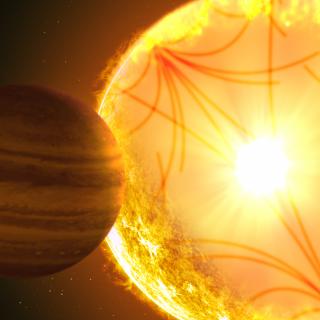Bibcode
Godoy-Rivera, D.; Mathur, S.; García, R. A.; Pinsonneault, M. H.; Santos, Â. R. G.; Beck, P. G.; Grossmann, D. H.; Schimak, L.; Bedell, M.; Merc, J.; Escorza, A.
Referencia bibliográfica
Astronomy and Astrophysics
Fecha de publicación:
4
2025
Revista
Número de citas
12
Número de citas referidas
10
Descripción
The original Kepler mission has delivered unprecedented high-quality photometry. These data have impacted numerous research fields (e.g., asteroseismology and exoplanets), and continue to be an astrophysical goldmine. Because of this, thorough investigations of the ~200 000 stars observed by Kepler remain of paramount importance. In this paper, we present a state-of-the-art characterization of the Kepler targets based on Gaia DR3 data. We placed the stars on the color-magnitude diagram (CMD), accounted for the effects of interstellar extinction, and classified targets into several CMD categories (dwarfs, subgiants, red giants, photometric binaries, and others). Additionally, we report various categories of candidate binary systems spanning a range of detection methods, such as renormalised unit weight error, radial velocity variables, Gaia non-single stars, Kepler and Gaia eclipsing binaries from the literature, among others. First and foremost, our work can assist in the selection of stellar and exoplanet host samples regarding CMD and binary populations. We further complemented our catalog by quantifying the impact that astrometric differences between Gaia data releases have on CMD location, assessing the contamination in asteroseismic targets with properties at odds with Gaia, and identifying stars flagged as photometrically variable by Gaia. We make our catalog publicly available as a resource to the community when researching the stars observed by Kepler.
Proyectos relacionados

Nucleosíntesis y procesos moleculares en los últimos estados de la evolución estelar
Las estrellas de masa baja e intermedia (M < 8 masas solares, Ms) representan la mayoría de estrellas en el Cosmos y terminan sus vidas en la Rama Asintótica de las Gigantes (AGB) - justo antes de formar Nebulosas Planetarias (NPs) - cuando experimentan procesos nucleosintéticos y moleculares complejos. Las estrellas AGB son importantes
Domingo Aníbal
García Hernández

Sismología Solar y Estelar y Búsqueda de Exoplanetas
Los objetivos genéricos de este Proyecto son: 1) el estudio de la estructura y dinámica del interior solar, 2) la extensión de dicho estudio al caso de otras estrellas, 3) la búsqueda y caracterización de planetas extrasolares por métodos fotométricos (principalmente mediante el método de tránsitos) y espectroscópico (variaciones en la velocidad
Savita
Mathur